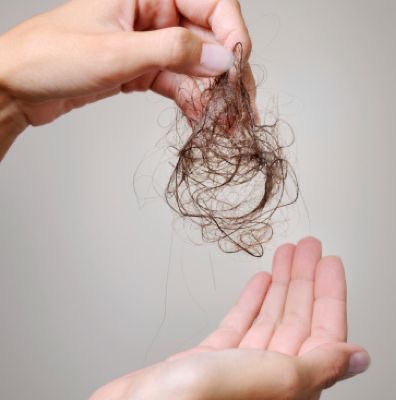
Table of Contents
Understanding Perimenopausal Hair Loss
Hair Loss in Perimenopause: A Common Concern
It’s not uncommon for women in their 40s to experience hair thinning and loss. This phenomenon can be distressing, causing feelings of alarm and even shame. While thinning hair is generally not indicative of an urgent medical problem, it’s essential to discuss it with your doctor, as it can have various underlying causes. In this comprehensive guide, we will delve into the world of perimenopausal hair loss, exploring its causes, symptoms, and available treatments.
Navigating the Perimenopausal Journey
What is Perimenopause?
Perimenopause is a transitional phase that occurs before menopause. Menopause itself is officially diagnosed after a woman has gone at least 12 months without a menstrual cycle, typically in her late 40s or 50s. During perimenopause, hormonal changes in the body, including fluctuations in estrogen and testosterone levels, lead to a range of symptoms that vary in intensity and onset. These symptoms can be challenging to identify since menstruation is still occurring. Some common perimenopausal symptoms include irregular periods, vaginal dryness, chills, night sweats, sleep disturbances, mood changes, weight gain, dry skin, loss of breast fullness, and, notably, thinning hair.
Demystifying Perimenopausal Hair Loss
What Does Perimenopausal Hair Loss Look Like?
Unlike male pattern baldness, which often involves a receding hairline and thinning at the crown, perimenopausal hair loss in women typically manifests differently. The most common type of hair loss during perimenopause is female pattern hair loss, characterized by gradual thinning of hair around the scalp. Interestingly, the frontal hairline usually remains intact.
What Causes Perimenopausal Hair Loss?
Perimenopausal hair loss can be attributed to hormonal changes, particularly the shift in the ratio of androgenic (male) to estrogenic (female) hormones during the menopausal transition. As women age, the prevalence of androgenic hair loss increases, with 38% of women experiencing this by the age of 70. However, diagnosing perimenopausal hair loss through hormone levels in blood tests can be challenging due to the wide variation in normal hormone levels. The diagnosis typically relies on observing hair loss patterns and assessing other perimenopausal symptoms.
Exploring Other Potential Causes
While shifting hormones are a common culprit, they are not the sole reason for hair loss during perimenopause. Several other factors can contribute to hair thinning, including:
1. Genetic Predisposition: Family history can play a significant role in hair loss.
2. Stress: High levels of stress can trigger a condition called telogen effluvium, resulting in sudden hair shedding.
3. Chronic Illness: Some chronic illnesses can lead to hair loss.
4. Thyroid Disease: Imbalances in thyroid hormones can affect hair growth.
5. Medications: Certain medications may have hair loss as a side effect.
6. Nutritional Deficiencies: Deficiencies in vitamins like D, iron, folic acid, and B vitamins can lead to hair problems.

7. Hairstyles: Wearing hair pulled tightly into styles like ponytails or cornrow braids can cause traction alopecia, leading to hair loss around the temples and hairline.
8. Hair Products: Certain hair products can damage follicles and limit hair length.
Understanding Fibrosis Alopecia: A type of hair loss seen in postmenopausal women, fibrosis alopecia is characterized by hair loss on the front and sides of the scalp. It appears to be an inflammatory reaction, possibly triggered by an immune response.
Exploring Treatment Options
Personalized Approach to Treatment
Given the multitude of factors contributing to hair loss, there is no one-size-fits-all solution. Effective treatment requires a personalized approach based on the specific causes identified.
Consulting a Medical Provider
The first step in addressing perimenopausal hair loss is consulting a medical provider. This can be an OB/GYN or dermatologist who will conduct a comprehensive assessment, including a thorough medical history, physical examination, and blood work to identify potential underlying causes.
Hormone Therapy Considerations
While hormonal changes are linked to hair thinning, hormone therapy is not a primary treatment for hair loss during perimenopause. The evidence supporting its effectiveness is limited.
FDA-Approved Treatments
Minoxidil is the only FDA-approved treatment for female-pattern hair loss. It is available over the counter, typically in the form of a topical foam. Some physicians may also prescribe antiandrogens like spironolactone alongside minoxidil, although this use is not FDA-approved.
Off-Label Medications
For some women, off-label use of finasteride, a drug primarily intended for male-pattern hair loss, may be considered. Ketoconazole, an anti-dandruff shampoo, is another option that some doctors recommend.
Understanding Minoxidil Limitations
It’s important to note that minoxidil only promotes hair growth when it is actively used. Discontinuing its use may result in a loss of the gained hair.

Addressing Nutritional Deficiencies
Medical providers may also explore nutritional deficiencies as a potential cause of hair loss. Vitamin D, iron, folic acid, and B vitamin levels should be checked and corrected if necessary.
Embracing Emotional Well-Being
Recognizing the Psychological Impact
Hair loss during perimenopause can have significant psychological consequences, affecting emotional well-being. It’s essential to acknowledge the emotional toll it can take on individuals and seek support and solutions.
Conclusion
In summary, perimenopausal hair loss is a common concern for women in their 40s, often accompanied by various other symptoms of hormonal transition. Understanding the causes, symptoms, and treatment options is crucial for addressing this issue effectively. While hormonal changes play a role, other factors, such as genetics, stress, chronic illness, and nutritional deficiencies, can contribute to hair thinning. Consulting a medical provider, considering FDA-approved treatments like minoxidil, addressing nutritional deficiencies, and acknowledging the emotional impact of hair loss are all essential steps in managing this condition. Ultimately, perimenopausal hair loss is a manageable aspect of the natural aging process, and seeking medical guidance can help individuals navigate this transitional phase with confidence and grace.
Share this content:








